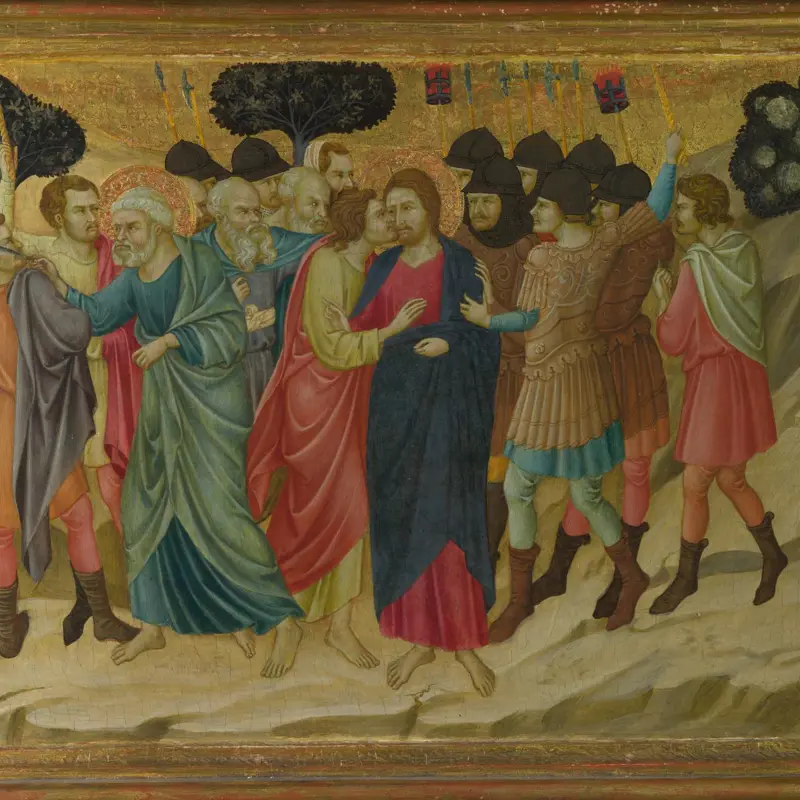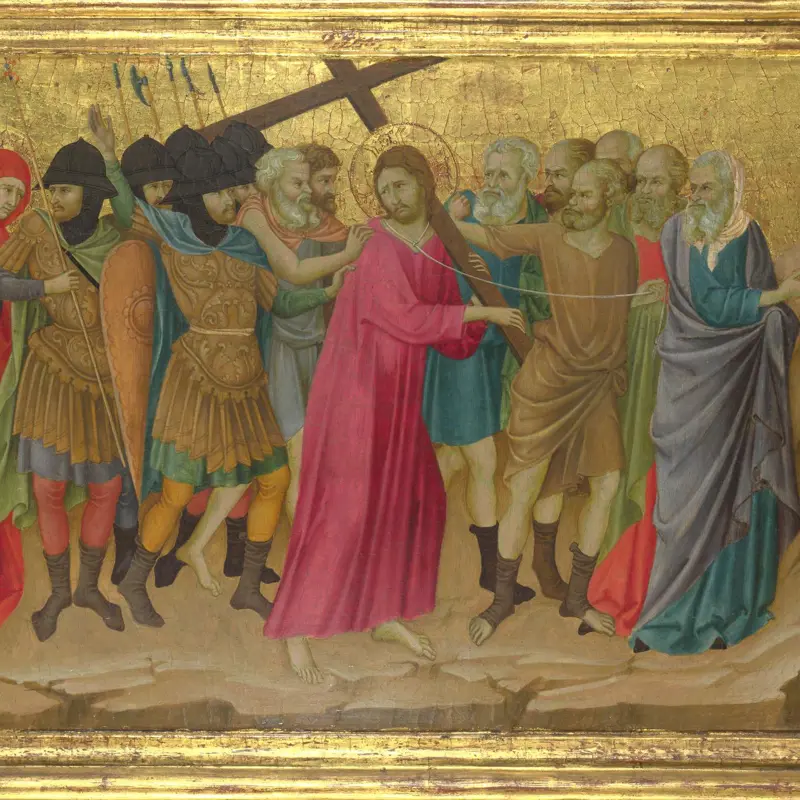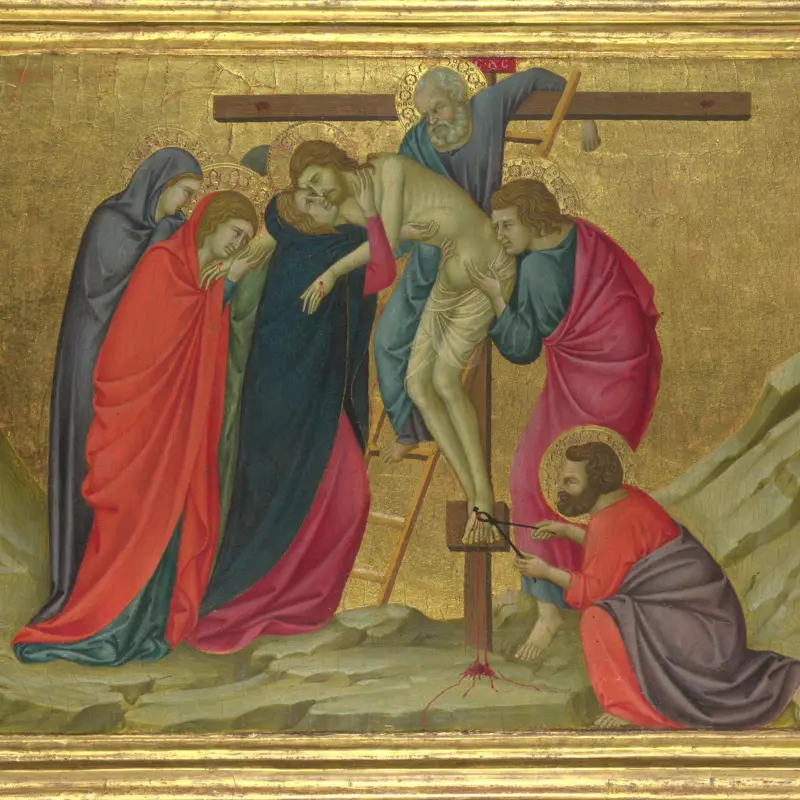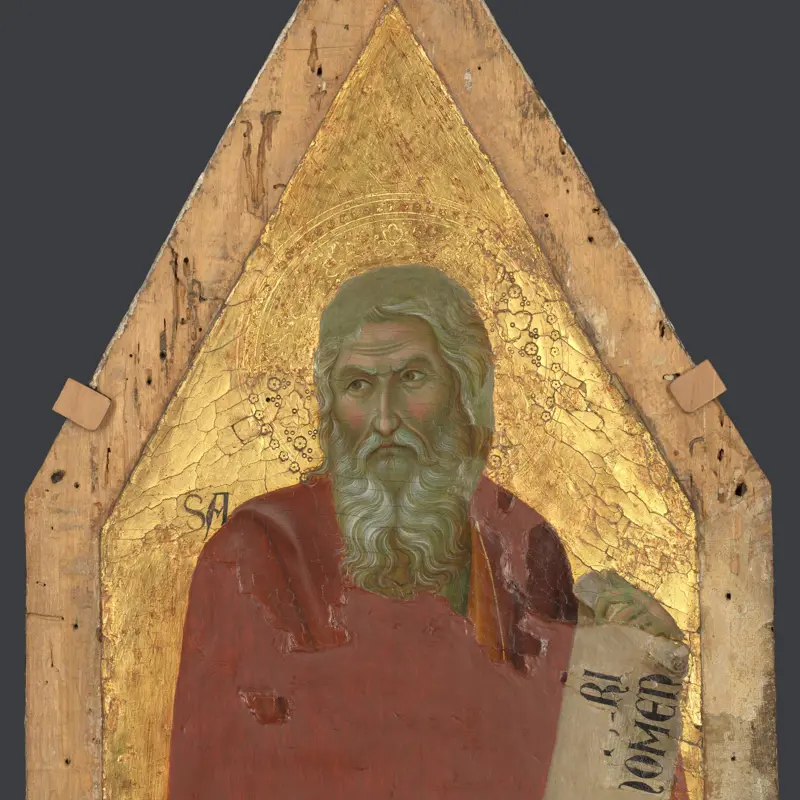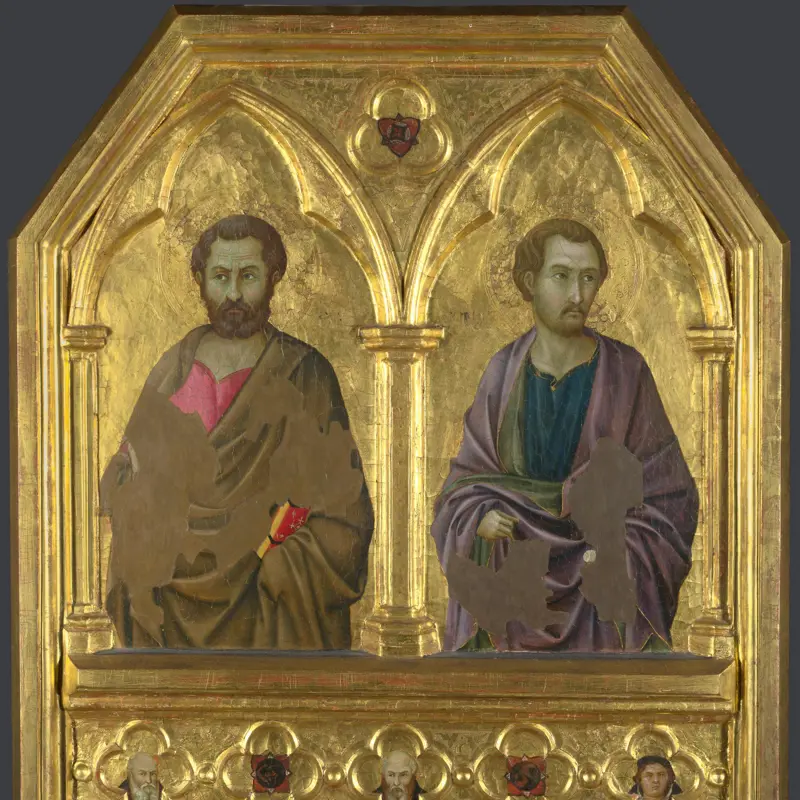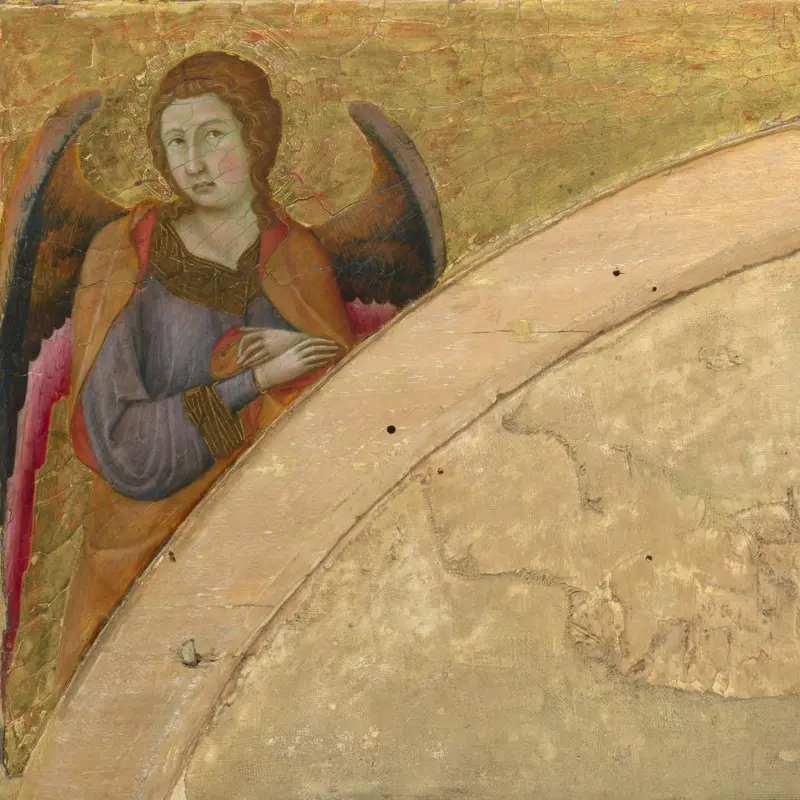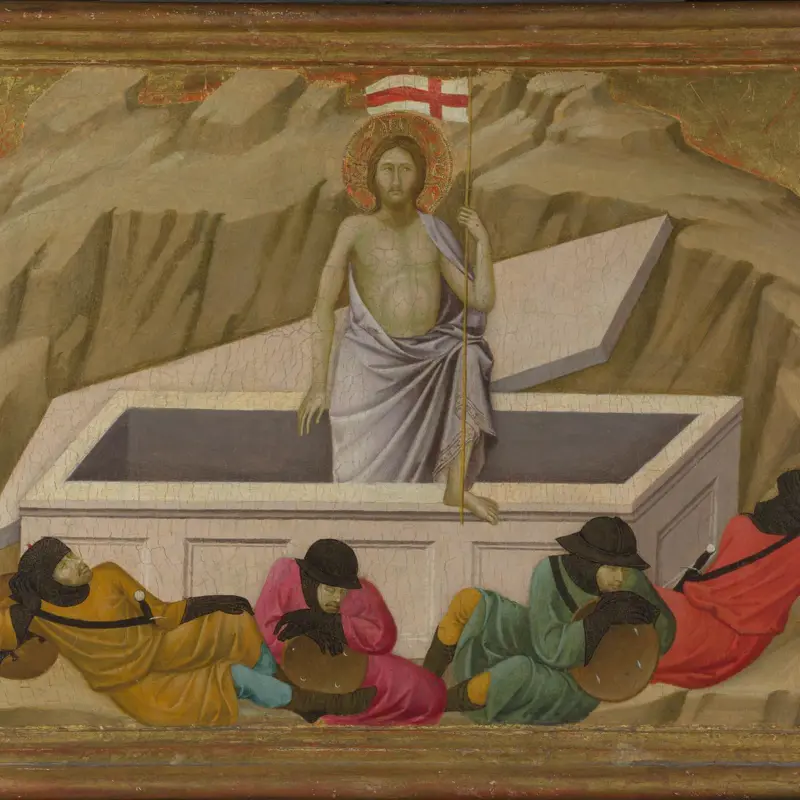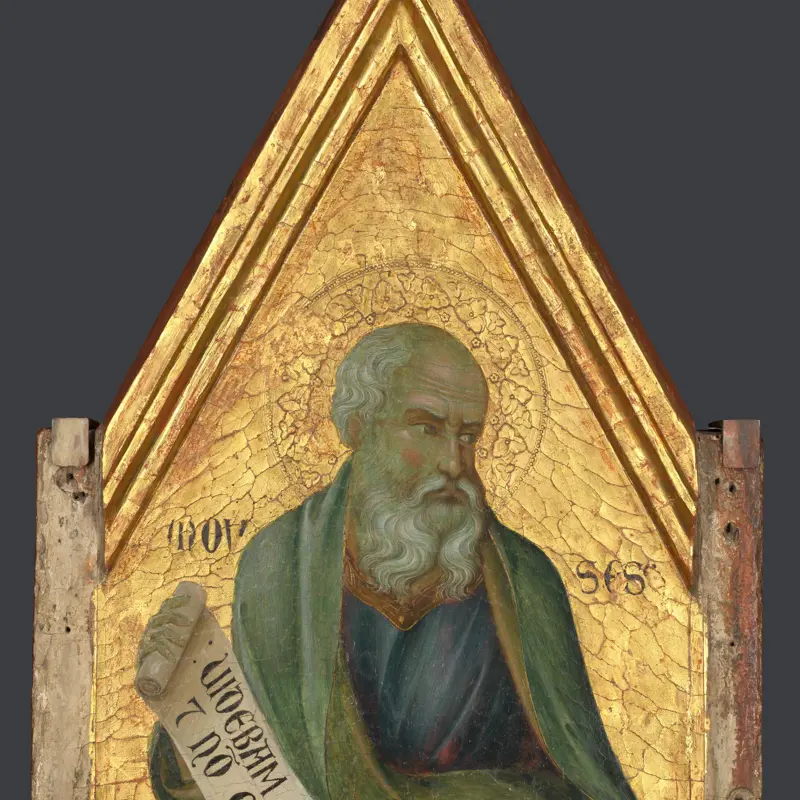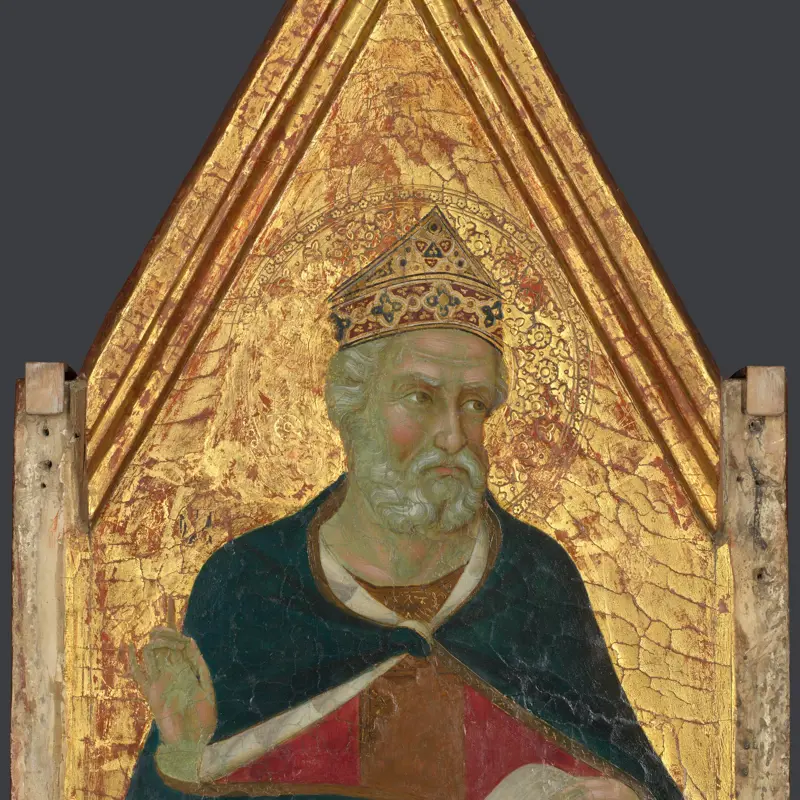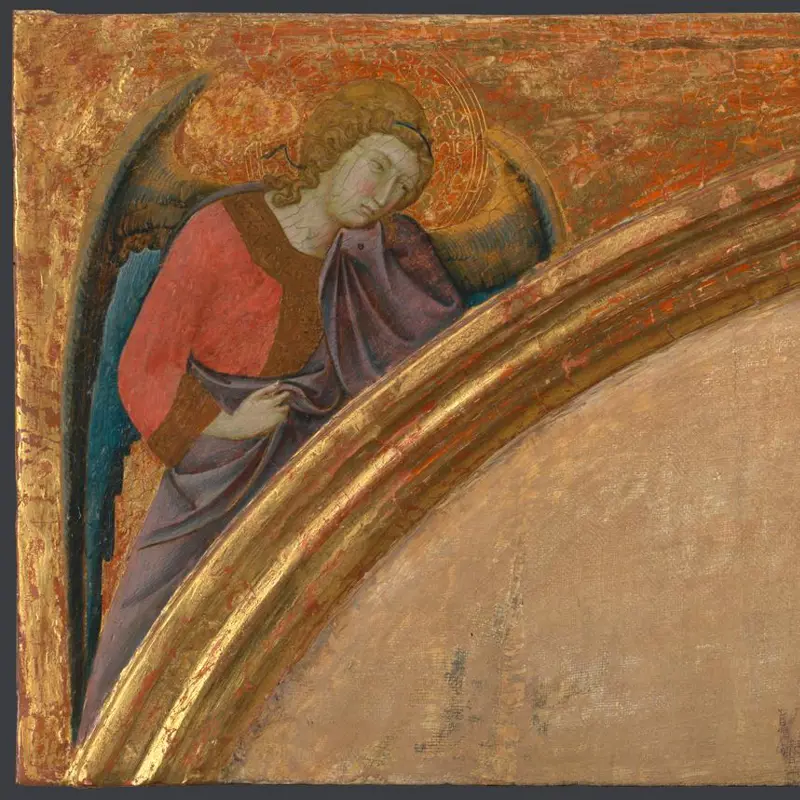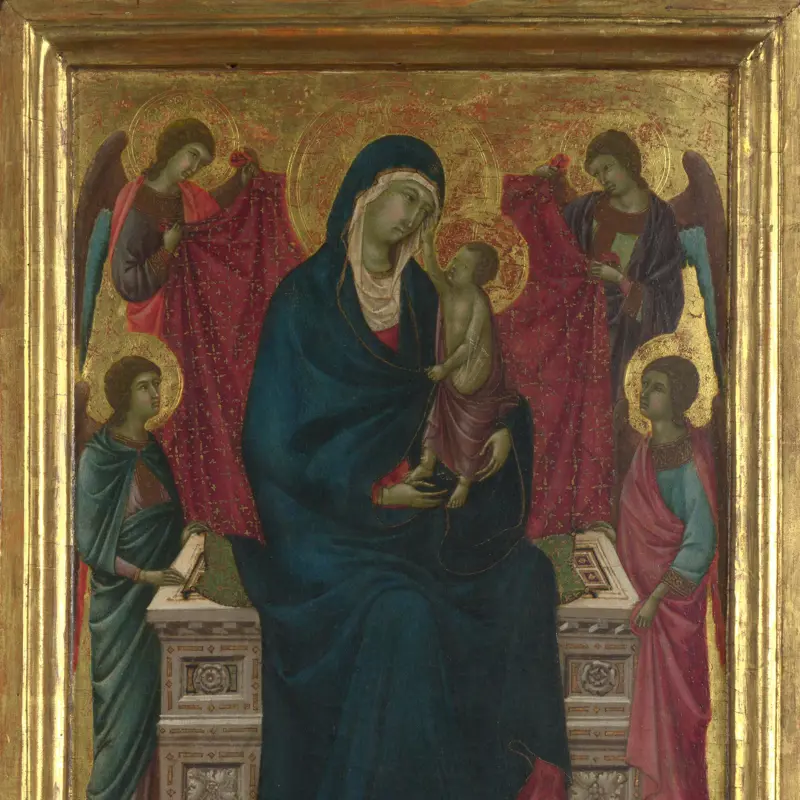Ugolino di Nerio, 'Saints Bartholomew and Andrew', possibly 1325-8
About the work
Overview
This picture was once part of a multi-panelled altarpiece with four tiers, made for the Florentine church of Santa Croce. It would have appeared in the third tier, above an image of the apostle Paul (now in the Gemäldegalerie, Berlin) and beneath an image of David.
The inscriptions that identify these figures as Saints Bartholomew and Andrew are very damaged. The two have very different features: Saint Bartholomew is shown as a young man with thick red hair and a beard, while Saint Andrew is shown as an older man with grey hair.
Saint Bartholomew’s tunic is painted with an elaborate pattern, and brown leaf-like shapes are probably mordant (the sticky substance used to attach gold leaf to a panel). This means that these areas were originally gilded. The edges of both draperies were also most likely gilded.
Key facts
Details
- Full title
- Saints Bartholomew and Andrew
- Artist
- Ugolino di Nerio
- Artist dates
- Documented 1317-27; died possibly 1329
- Part of the series
- The Santa Croce Altarpiece
- Date made
- Possibly 1325-8
- Medium and support
- Egg tempera on wood (probably poplar)
- Dimensions
- 70 × 62 cm
- Acquisition credit
- Presented by the Earl of Crawford and Balcarres through the Art Fund, 1919
- Inventory number
- NG3473
- Location
- Room 58
- Collection
- Main Collection
- Previous owners
- Frame
- 14th-century Sienese Frame with Later Interventions (original frame)
Provenance
Additional information
Text extracted from the ‘Provenance’ section of the catalogue entry in Dillian Gordon, ‘National Gallery Catalogues: The Italian Paintings before 1400’, London 2011; for further information, see the full catalogue entry.
Bibliography
-
1878Royal Academy of Arts, Exhibition of Works by the Old Masters, and by Deceased Masters of the British School: Including a Special Selection from the Works of the Principal Representatives of the Norwich School, London 1878
-
1904A.A. de Pass, Exhibition of Pictures of the School of Siena and Examples of the Minor Arts of that City (exh. cat. Siena, 1904), Siena 1904
-
1951Davies, Martin, National Gallery Catalogues: The Earlier Italian Schools, London 1951
-
1986Davies, Martin, National Gallery Catalogues: The Earlier Italian Schools, revised edn, London 1986
-
1988Gordon, Dillian, National Gallery Catalogues: The Early Italian Schools before 1400, revised edn, London 1988
-
2001
C. Baker and T. Henry, The National Gallery: Complete Illustrated Catalogue, London 2001
-
2011Gordon, Dillian, National Gallery Catalogues: The Italian Paintings before 1400, London 2011
About this record
If you know more about this work or have spotted an error, please contact us. Please note that exhibition histories are listed from 2009 onwards. Bibliographies may not be complete; more comprehensive information is available in the National Gallery Library.
Images
About the series: The Santa Croce Altarpiece
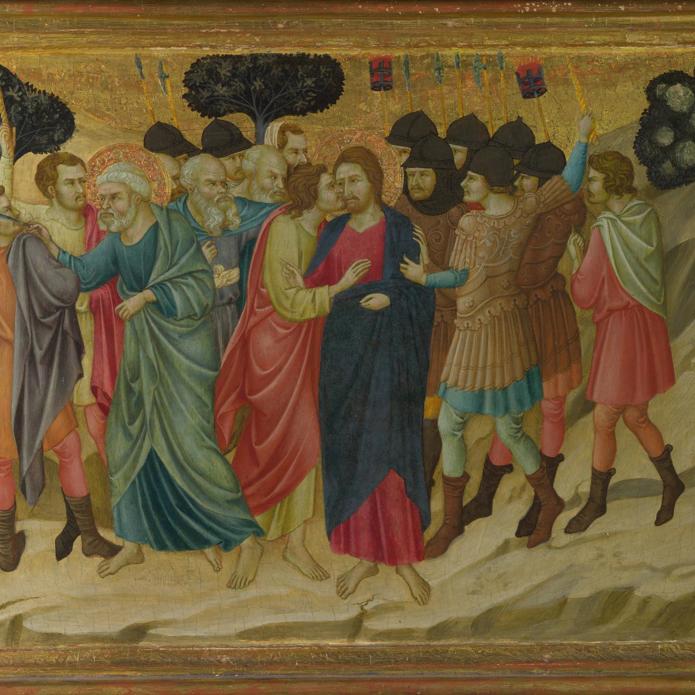
Overview
These panels were once part of a large altarpiece which adorned the high altar of the church of Santa Croce in Florence. It focused on the Passion of Christ (his torture and crucifixion) and the Resurrection – an appropriate theme, as the church was dedicated to the Holy Cross.
Drawings made in the late eighteenth century show how it was arranged originally. There were four tiers of images: the main tier had a central image of the Virgin and Child flanked by images of the saints within arches, which were decorated with angels (there are two sets of these in the National Gallery’s collection).
Above was a row of saints framed in pairs; we hold two pairs. The uppermost tier consisted of six pinnacle panels, three on either side of a central image which probably showed the Crucifixion, itself topped by an image of Christ making a blessing gesture. The predella (the lowest layer) consisted of seven scenes showing Christ’s suffering and death; we have four of these.

